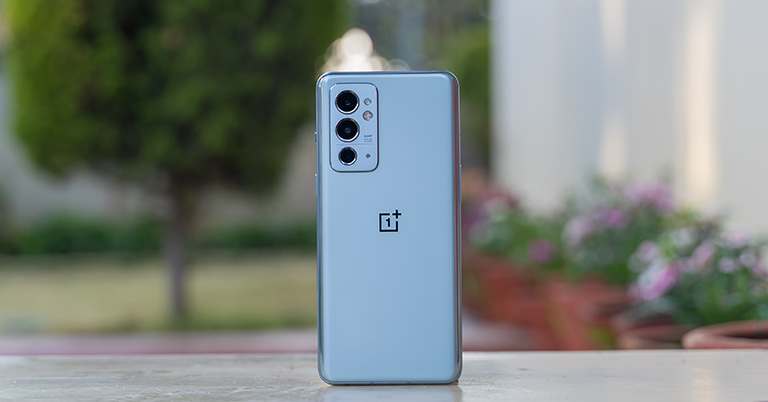
Almost three months after its initial launch in China, the OnePlus 9RT finally made its way to India a few weeks ago. Weirdly enough, it is currently exclusive to these two markets and I am not quite sure when or if it will ever launch globally. I have been using OnePlus 9RT as my daily driver for about 2 weeks now, and here, I will give you guys a complete review of the device including its pros and cons.
Compared to its predecessor, the OnePlus 9R, the 9RT brings a more powerful Snapdragon 888 processor at its core. So yes—the 9RT is definitely aimed at those who don’t want to compromise on performance without spending a lot of money. As for pricing, it costs INR 42,999 for the 8/128GB and INR 46,999 for the 12/256GB model in India which is roughly 10% higher than what it goes for in China.
OnePlus 9RT Specifications:
- Body (W x H x T): 74.6 x 162.2 x 8.29mm, 198.5 gm, Corning Gorilla Glass 5
- Display: 6.62-inch E4 AMOLED panel, 100% DCI-P3, HDR10+, 1300 nits peak brightness, 120Hz refresh rate, 300Hz default touch sampling rate (600Hz while gaming)
- Resolution: FHD+ (2400 x 1080 pixels), 20:9 aspect ratio, 397PPI
- Chipset: Qualcomm Snapdragon 888 5G (5nm)
- CPU: Octa-core (1×2.84 GHz Kryo 680 & 3×2.42 GHz Kryo 680 & 4×1.80 GHz Kryo 680
- GPU: Adreno 660
- Memory: 8/12GB LPDDR5 RAM, 128/256GB UFS 3.1 storage (fixed)
- Software & UI: Android 11 with OxygenOS 11 on top
- Rear Camera: Triple (with LED flash);
– 50MP Sony IMX766 primary sensor, OIS
– 16MP ultra-wide-angle lens
– 2MP macro sensor - Front Camera: 16MP sensor
- Audio: Dual stereo speakers, Noise cancellation, Dolby Atmos
- Security: Optical in-display fingerprint sensor, Face unlock
- Sensors: Accelerometer, Electronic Compass, Gyroscope, Ambient Light, Proximity
- Connectivity: Dual-SIM (Nano), WiFi 802.11 a/b/g/n/ac/ax (Dual-band), Bluetooth 5.2, GPS / AGPS / Glonass / Galileo / Beidou, USB Type-C, NFC, 4G LTE, 5G
- Battery: 4500mAh with 65W charging
- Colors: Nano Silver, Hacker Blue
- Price in Nepal: N/A
OnePlus 9RT Review:
Performance
- Qualcomm Snapdragon 888 (5nm)
- 8/12GB LPDDR5 RAM, 128/256GB UFS 3.1 storage (fixed)
- Android 11 with OxygenOS 11 on top
Okay, the first thing that’s great about this phone is the performance. But it’s not just because of the flagship Snapdragon 888 chipset and all the other high-end stuff to go with it. More importantly, the OnePlus has optimized the thermal design on the 9RT.
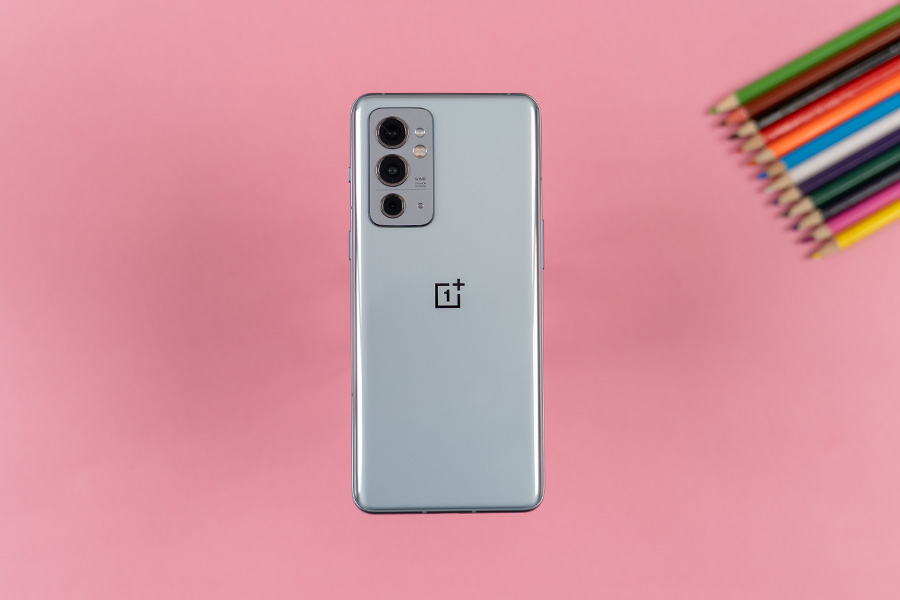
We all know that the OnePlus 9 Pro—and even the vanilla OnePlus 9—were subject to excessive overheating issues. But with the 9RT, the company has addressed those concerns to keep things cool under the chassis. For this, there’s a 59% larger vapor chamber than the one on the 9 Pro.
Benchmarks
So, curious to find out just how effective the new cooling mechanism is—like most people—I also ran a throttling test at the phone’s default out-of-the-box settings. And the 9RT’s CPU throttled to just 90% of its max performance in 30 minutes.
While I am pretty impressed by this result, I realized that OxygenOS now shares its codebase with OPPO’s ColorOS. And ColorOS by default optimizes performance for better battery and thermal efficiency. So, in order to eke out the very best performance, I had to manually set the phone to the “High Performance Mode”.
But even under this mode, the CPU on the 9RT throttled to just 88% of its max performance. Not bad! The result was similar in a one-hour test as well.
I believe winter also works as a nice chiller to keep the thermals in check, so these numbers could slightly degrade in summer. But I’m pretty sure things won’t be as bad as with last year’s OnePlus 9 and 9 Pro.
| OnePlus 9RT | ||
| Androbench | Sequential Read | 1602.8 MB/s |
| Sequential Write | 743.73 MB/s | |
| AnTuTu v8.5 | Total | 718964 |
| CPU | 192575 | |
| GPU | 316087 | |
| Memory | 105158 | |
| UX | 105144 | |
| Geekbench 5.4.4 | CPU (Single Core) | 1127 |
| CPU (Multi-Core) | 3419 | |
| Compute (Vulkan) | 5048 | |
| PCMark (Work 3.0 Performance) | 15195 | |
| 3DMark (Wild Life) | 5879 | |
- Higher is better
Snappy day-to-day performance
Regardless, let me also share my experience with normal day-to-day usage. Even with the High Performance Mode turned off, you will have no trouble browsing through your social media apps or anything of that sort. To date, I’ve never experienced any hiccup or slowdown here—as expected from such a powerful chipset. Coupled with a 120Hz refresh rate and a default touch sampling rate of 300Hz, the whole smartphone experience on the 9RT is really snappy. Plus, OnePlus even lets you bump the touch sampling rate to 600Hz while gaming.
However, despite the 8GB RAM on my unit, I am a little shocked to see the phone suffer from memory management issues. It can handle lightweight apps and multitask between them pretty efficiently. But if they’re joined by some resource-heavy apps or games, then the equation becomes entirely different and the phone has to relaunch such apps.
So, I hope OnePlus fixes this with a software update ASAP. In terms of gaming, you can easily play the most taxing titles like Genshin Impact at the highest settings here.
Gaming
With motion blur turned off, graphics quality set to Highest, and 60fps mode turned on, the 9RT achieves a 57fps on average with 97% stability for the first 5-8 minutes or so. To compare, the Xiaomi 11T Pro that ships with the same chipset manage just 51fps on average with 69% stability during the same period. As you can see in the graph, both phones suffer from stutters every now and then, although the 11T Pro is comparatively less stable.
On the other hand, the 9RT maintains better gameplay when dialing down the graphics preset to High. It is still prone to intermittent stutters after a while into the game but the superior fps stability here is quite noticeable. Likewise, the phone doesn’t heat up beyond 42ºC even when playing such a graphically-demanding game for half an hour straight.
Getting to PUBG Mobile, the OnePlus 9RT can hit up to Ultra HD graphics and Ultra frame rates. Under this, you can expect a smooth 40fps gaming experience with 100% stability. For an even smoother 60fps gameplay, you can lower the settings to HDR graphics and Extreme frame rate where it easily manages a 60fps average with 100% stability.
Games like COD Mobile don’t break a sweat to the OnePlus 9RT either. At its highest setting, the phone gives a stable 60fps gameplay. I also tried out a few 120fps games on this thing. Injustice 2 is well playable with a stable 120fps while Critical Ops—which is also a 120fps-ready game—is restricted to just 60fps here.
5G Bands
Besides performance, the 9RT also brings a higher number of 5G bands. Last year’s OnePlus 9 and 9R drew widespread criticism since these flagship-tier phones supported just one or two 5G bands. But this time around, the company has provided a total of eight 5G bands. It still pales in comparison to the competition—but this definitely makes the 9RT a little more future-proof.
Software
Moving on, while people are still arguing about the ColorOS-OxygenOS merger, I don’t consider it to be an absolute dealbreaker until and unless OxygenOS entirely transforms into ColorOS. And so far, I haven’t come across any critical bug that would break the user experience either.
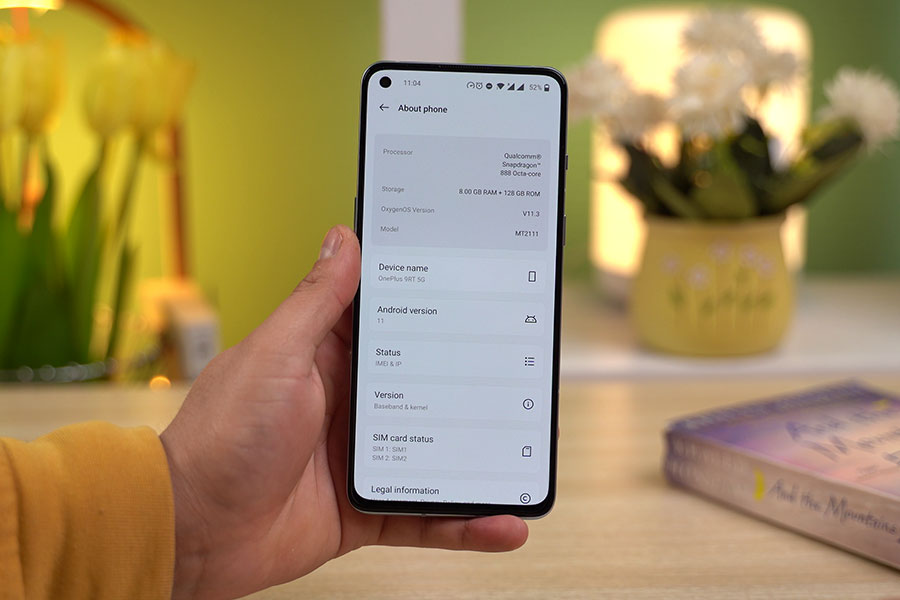
But I am disappointed to see Android 11 at the heart of this 2022 semi-flagship phone, given how Android 12 has been available for months now. Plus, our unit is still on December 2021’s security update while we are almost halfway through February already.
Contrary to this, the recently launched Galaxy S21 FE and the Vivo V23 Pro—which also fall under the sub-50000 price bracket in India—ship with Android 12 out-of-the-box. However, the good news is that the 9RT is guaranteed to receive 3 years of major Android updates and 4 years of security patches.
Design
- Glass front, glass back, aluminum frame
- Gorilla Glass 5
In terms of looks, this phone shares a similar design language with the OnePlus 9 series. I have it in the Nano Silver color variant that gives off a premium feeling the moment you hold it in your hands—thanks to the compact body and round edges at the back. It’s also available in Hacker Black color variant which has a matte finish and a bit of a shimmering effect at the back that looks drop-dead stunning.
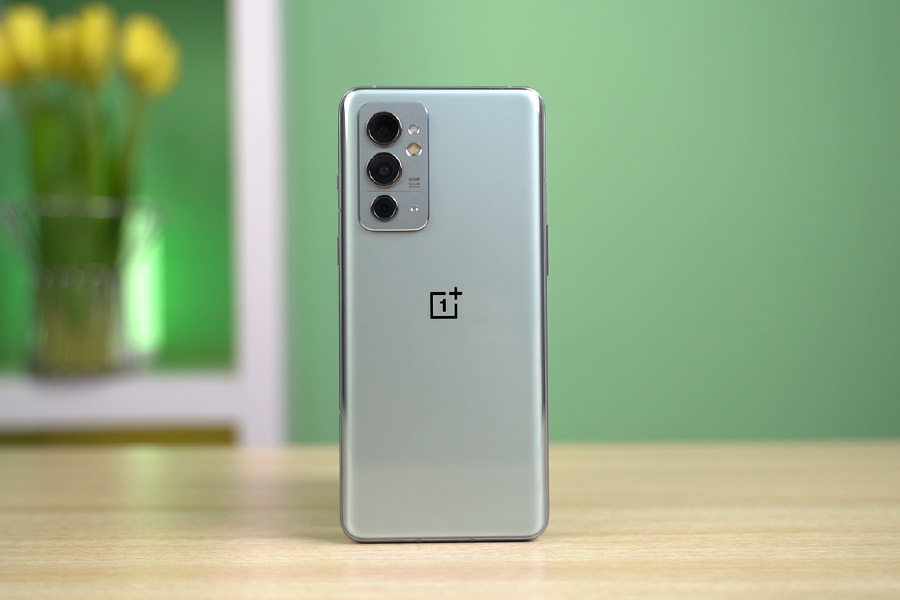
Anyway, the company has included Gorilla Glass 5 protection on both the front and back of the phone. But I’ll still recommend wrapping it around a case since 9RT’s glass finish makes it a tad slippery, and you probably don’t want to wager on this glass body either. Moreover, despite its near-200 grams weight, OnePlus has done a pretty good job of balancing the heft, so you won’t struggle to carry it for a longer period.
The 9RT also retains the signature OnePlus alert slider while the buttons here have nice tactile feedback. The haptics is also pretty good with a precise vibration that highlights keystrokes and button presses for a pleasing response.
Unfortunately, there’s no IP rating of any sort here which is to be expected given how even the standard OnePlus 9 skipped IP certification—except for the T-Mobile variant in the US.
Display
- 6.62 inches FHD+ E4 AMOLED screen
- 120Hz refresh rate, 300Hz touch sampling rate
- 1300 nits peak brightness
Getting into the display, the OneOlus 9RT flaunts a 6.62-inch E4 AMOLED panel with FHD+ resolution. As I mentioned earlier, this is a 120Hz screen with a 300Hz touch sampling rate. Most of the apps here have been optimized to make full use of the high refresh rate, so scrolling through websites and navigating between the apps is a breeze in this thing.
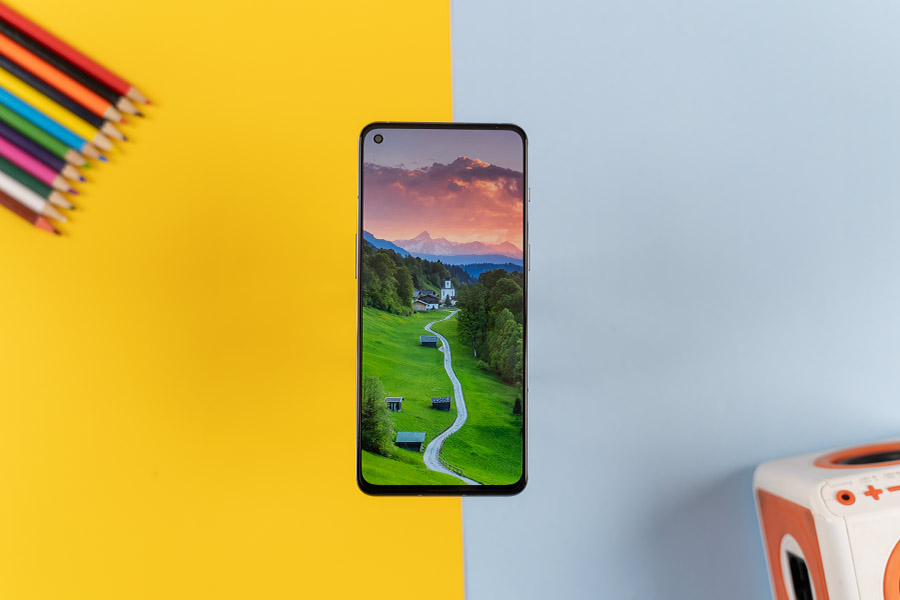
Then again, this is not an LTPO screen like the one on the 9 Pro, which means it can switch between 60 or 120Hz only. Nevertheless, in the recommended “Vivid” picture profile, the display reproduces vibrant colors with excellent contrast levels and is ideal for multimedia consumption. Speaking of which, you can also enjoy HDR content on OTT platforms like Netflix without any weird issues that you might encounter in cheaper phones.
Plus, it is complemented by Dolby Atmos-powered stereo speaker setup—with the main speaker placed on the bottom and the earpiece acting as the secondary speaker unit.
The audio quality is loud enough and I enjoyed listening to Spotify and watching Shark Tank videos here. Then again, its soundstage isn’t wide enough and you will notice slightly muffled sound output at max volume. Similarly, throughout my time with the phone, I haven’t had any trouble regarding outdoor visibility either.
In-display fingerprint
This AMOLED screen also hosts an optical in-display fingerprint sensor which is quite fast and accurate. Still, I would’ve liked it better if it were positioned a bit higher. For someone with small hands like mine, this sensor position takes some getting used to. About the WiFi, Oneplus claims it has a Triple Antenna system and on my usage, its reception is quite good. Plus, the call quality is also pretty decent here.
Camera
- Quad-camera setup at the back
- (50MP IMX766 main w/OIS, 16MP ultrawide, 2MP macro)
- 16MP selfie camera
The biggest complaint with semi-flagship phones from OnePlus has always been the sub-par cameras. And that trend seems to be carried down to the 9RT too. It brings a triple camera setup led by a 50MP IMX766 primary sensor with OIS, which is the same sensor used on the much cheaper OnePlus Nord 2. Accompanying this is a 16MP ultrawide and the gimmicky 2MP macro lens.
Normal Images
Normal daytime images from the 9RT have a boost in contrast and saturation in general. I compared its cameras against the Xiaomi 11T Pro—and as you can see—9RT’s shots are noticeably heavier in contrast. While such image processing does look better in a few scenarios, photos end up looking relatively dark most of the time.
On the contrary, the 11T Pro takes comparatively brighter images along with a bluish hue, whereas OnePlus has gone with a more warm color science instead.
Ultra-wide Images
Switching to the ultra-wide lens, it’s the exact opposite. Additionally, there’s not much detail to talk about from either of them and you could say that both phones aren’t good with wide-angle photography.
Portrait Images
When it comes to portraits, the OnePlus 9RT results are quite soft and hazy, compared to the saturated, contrast-heavy, and over-sharpened images from Xiaomi. But in general, I prefer OnePlus’s output because the ones from Xiaomi are just too vibrant and sharp which does not look good on human subjects. Plus, the 11T Pro also fails to manage background exposure well in many instances.
Nighttime Images
Moving on to nighttime shots, the 9RT preserves the essence of the “night” with maintained black levels and detail. On the other hand, the 11T Pro attempts to maintain an equal level of exposure over the whole image and lifts details in shadows. You can also shoot ultrawide nighttime images from both phones where Xiaomi’s results look somewhat muddy and with toned-down exposure—as opposed to 9RT’s superior sharpness.
With Night Mode turned on, photos have better contrast and a more balanced exposure on the OnePlus 9RT. It also performs well in terms of flare control. The narrative is the same with ultra-wide night mode as well.
Selfies
In terms of selfies, well, the 9RT’s results look ghastly with an unnatural red tint and too much softness. Xiaomi’s photos aren’t the best either with oversharpened and dark output, so both phones are a big no-no when it comes to selfies. The Vivo V23 Pro is way better when it comes to processing human skin tone.
Videography
Getting to the videography aspect, both phones can capture at up to 4K 60fps. Here, 9RT’s footages have a better dynamic range than 11T Pro. But if you are walking, you will notice the slightest hint of jerks every now and then. Having said that, Xiaomi’s 4k 60 fps videos are also pretty stable, but its color science is too lackluster. Switching to 1080p 60 fps mode, I noticed OnePlus bearing better stabilization even though the 11T Pro’s videos aren’t that bad either.
The selfie videos from 9RT cap out at just 1080 30fps, which is quite a bummer at this price point. Also, the footages have a pretty bad exposure control whereas its field of view isn’t as wide either. So, you’ll always need to stretch your arms a bit when you’re shooting videos. The audio from the built-in-mic is quite good though.
All in all, both the OnePlus 9RT and the Xiaomi 11T Pro’s camera are straight-up average. And for a cheaper price, you can find better camera phones like last year’s Galaxy S20 FE or the new Vivo V23 Pro. So in this regard, I believe OnePlus could have offered the OnePlus 9’s camera system with Hasselblad optimization.
Battery
- 4500mAh battery, 65W wired charging
Lastly, the OnePlus 9RT has the same 4500mAh battery as the rest of the phones in this lineup.
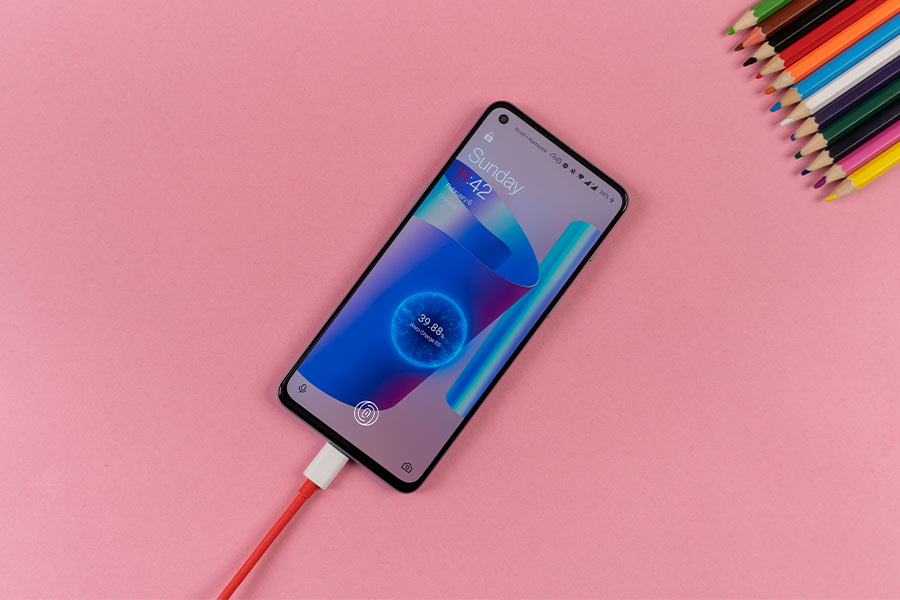
But this non-LTPO 120Hz display and Snapdragon 888 combo mean the phone only delivers an above-average battery life. I was able to go from unplugging it in the morning to the end of my office hour in the evening with still some juice left. But if I had plans to go out for the night, I would need to fuel it up again.
Thankfully, it supports an upgraded 65W fast charging. Using the power adapter provided inside the box itself, it takes around 35 minutes to fully juice up the phone from 0-100%.
No PD charger
Yet, unlike the one that shipped with the OnePlus 9 Pro, it’s not a Power Delivery compatible charger. As a result, I couldn’t use it to charge my laptops or fast charge other PD-compliant devices.
OnePlus 9RT Review: Conclusion
Wrapping up this review, after using the OnePlus 9RT for the past few weeks, I think despite some shortcomings, it’s a very good option if you are looking for a flagship experience at a cheaper price. Here, you’re getting a fairly premium and ergonomic design, a superb 120Hz AMOLED display, and Snapdragon 888 chipset with improved thermals. However, if OnePlus had provided a better camera setup—like the one on the vanilla OnePlus 9, it would have been a terrific bargain all around.
Likewise, if you look at the competition, we are soon going to see the launch of the iQOO 9 in the Indian market, which should be priced quite similarly to the 9RT. But it also brings better specs like a 10-bit display and superior cameras. The Xiaomi 11T Pro is another option that comes with a cheaper price tag and offers equivalent features. But if you want pure value, I would go with last year’s iQOO 7 Legend that’s currently available at Amazon for an insane deal.
- Watch our video of the OnePlus 9RT.
OnePlus 9RT Review: Pros and Cons
Pros:
- Ergonomic design
- Vibrant 120Hz display
- Reliable Performance
- Optimized thermals
- Fast charging
Cons:
- No IP rating
- No Gorilla Glass Victus protection
- Average cameras






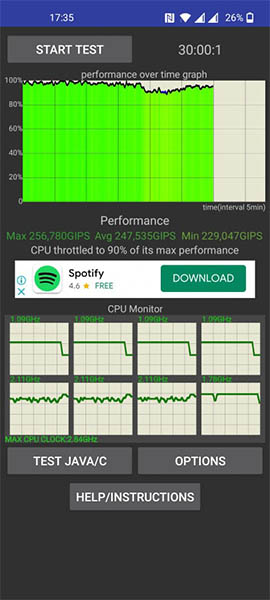

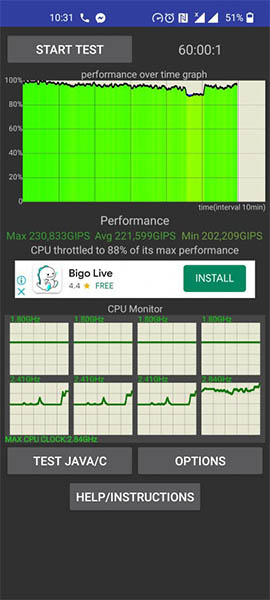






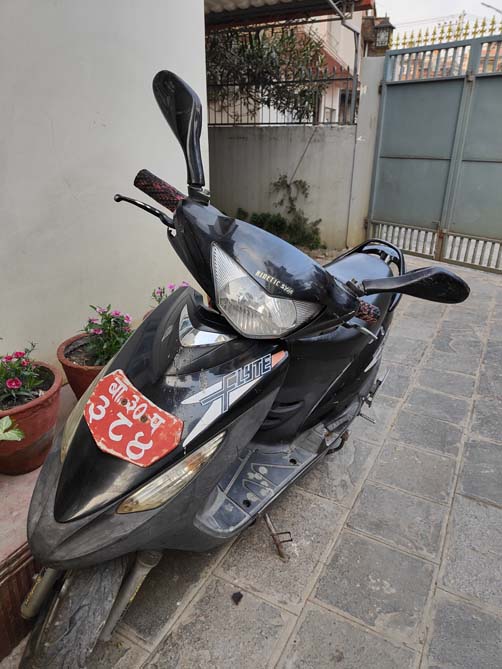
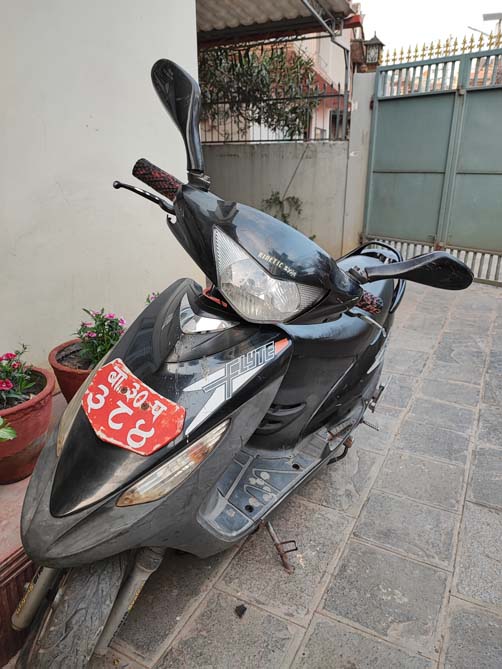


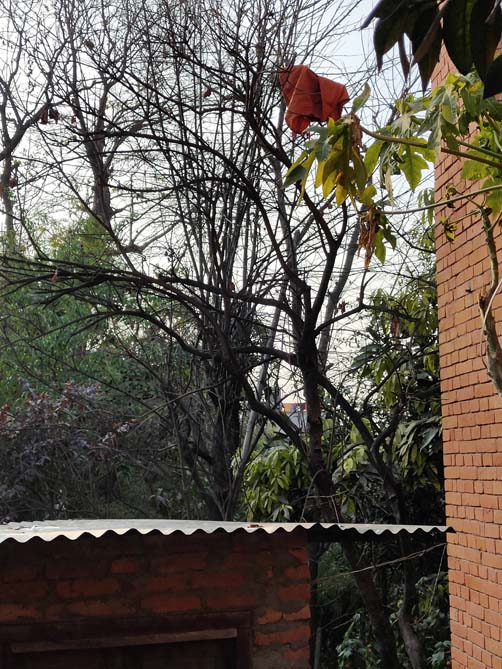

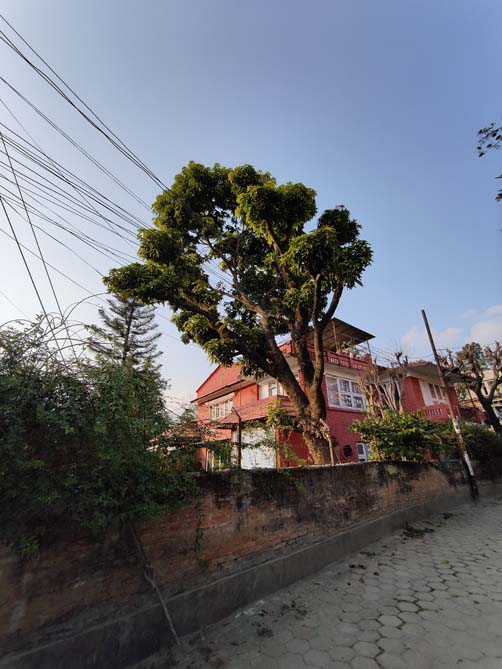

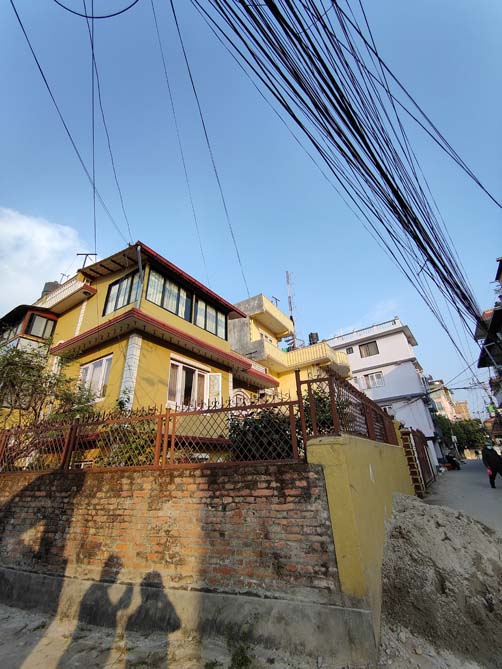
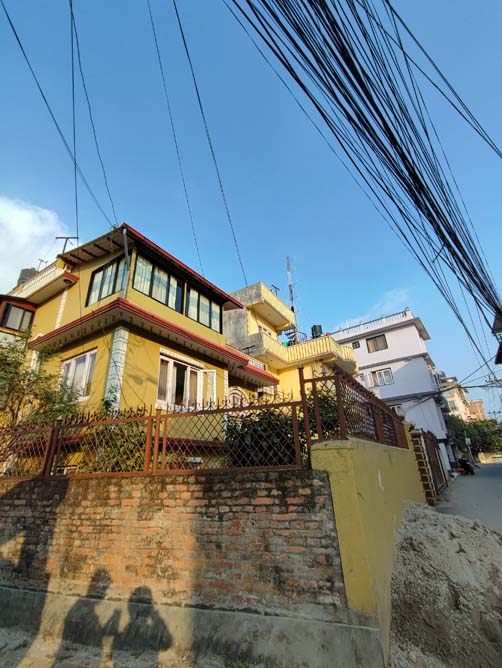














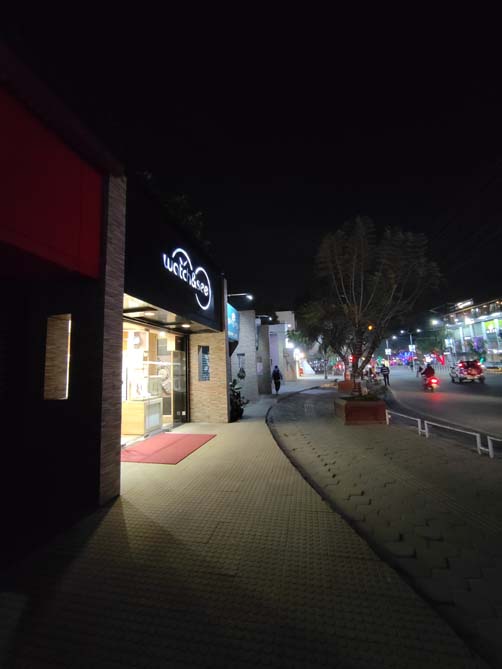


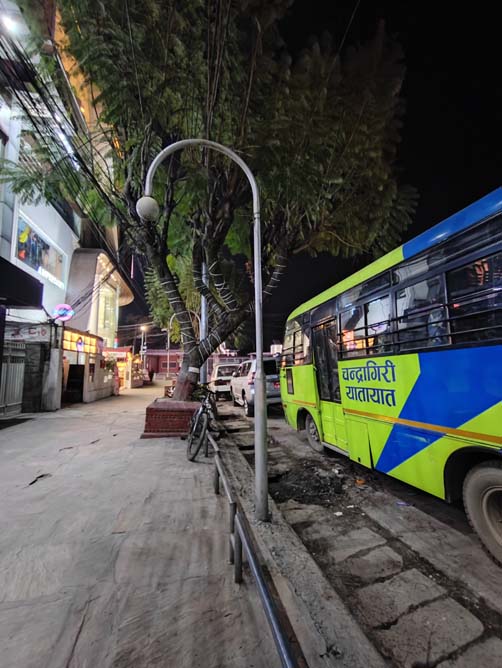







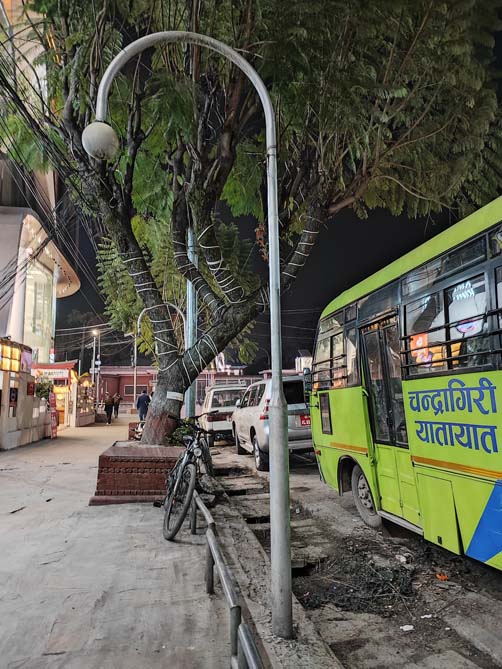

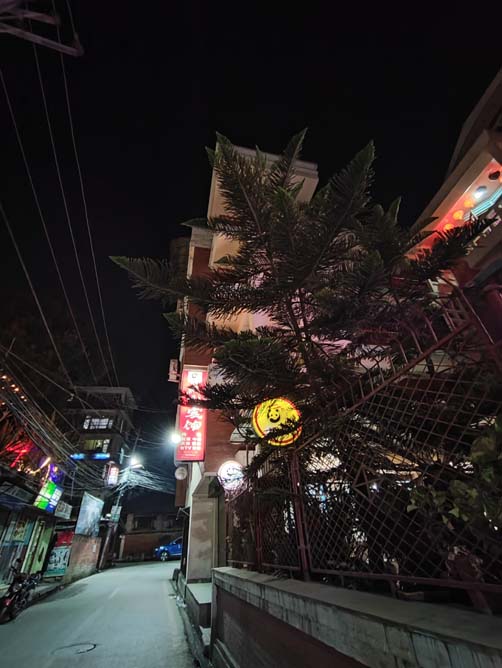









![Best Gaming Laptops in Nepal Under Rs. 250,000 (रु 2.5 Lakhs) [2025] Best Gaming Laptops Under 2.5 lakhs in Nepal [Feb 2025 Update]](https://cdn.gadgetbytenepal.com/wp-content/uploads/2025/02/Best-Gaming-Laptops-Under-2.5-lakhs-in-Nepal-Feb-2025-Update.jpg)
![Best Gaming Laptops in Nepal Under Rs. 120,000 (रु 1.2 Lakhs) [2025] Best Budget Gaming Laptops Under Rs 120000 in Nepal 2025 Update](https://cdn.gadgetbytenepal.com/wp-content/uploads/2025/05/Best-Budget-Gaming-Laptops-Under-Rs-120000-in-Nepal-2024-Update.jpg)
![Best Laptops Under Rs. 80,000 in Nepal [2025] Best Laptops Under 80,000 in Nepal March 2025 Update](https://cdn.gadgetbytenepal.com/wp-content/uploads/2025/03/Best-Laptops-Under-80000-in-Nepal-March-2025-Update.jpg)
![Best Gaming Laptops in Nepal Under Rs. 200,000 (रु 2 Lakhs) [2025] Best gaming lapotp under 2 lakhs Nepal Feb 2025](https://cdn.gadgetbytenepal.com/wp-content/uploads/2025/01/Best-Gaming-Laptops-Under-2-Lakh-Nepal-Feb-2025-Update.jpg)

![Best Mobile Phones Under Rs. 15,000 in Nepal [Updated 2025] Best Phones Under 15000 in Nepal 2024 Budget Smartphones Cheap Affordable](https://cdn.gadgetbytenepal.com/wp-content/uploads/2024/03/Best-Phones-Under-15000-in-Nepal-2024.jpg)
![Best Mobile Phones Under Rs. 20,000 in Nepal [Updated] Best Mobile Phones Under NPR 20000 in Nepal 2023 Updated Samsung Xiaomi Redmi POCO Realme Narzo Benco](https://cdn.gadgetbytenepal.com/wp-content/uploads/2024/01/Best-Phones-Under-20000-in-Nepal-2024.jpg)
![Best Mobile Phones Under Rs. 30,000 in Nepal [Updated 2025] Best Phones Under 30000 in Nepal](https://cdn.gadgetbytenepal.com/wp-content/uploads/2025/01/Best-Phones-Under-30000-in-Nepal.jpg)
![Best Mobile Phones Under Rs. 40,000 in Nepal [Updated 2025] Best Phones Under 40000 in Nepal 2024 Smartphones Mobile Midrange](https://cdn.gadgetbytenepal.com/wp-content/uploads/2024/02/Best-Phones-Under-40000-in-Nepal-2024.jpg)
![Best Mobile Phones Under Rs. 50,000 in Nepal [Updated 2025] Best Phones Under 50000 in Nepal](https://cdn.gadgetbytenepal.com/wp-content/uploads/2025/01/Best-Phones-Under-50000-in-Nepal.jpg)
![Best Flagship Smartphones To Buy In Nepal [Updated] Best flagship phone 2025](https://cdn.gadgetbytenepal.com/wp-content/uploads/2024/07/Best-Flagship-Phones-who-is-it-ft-1.jpg)